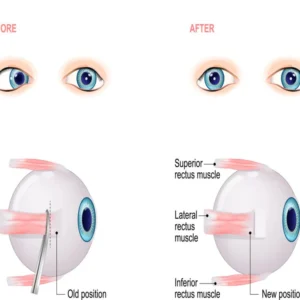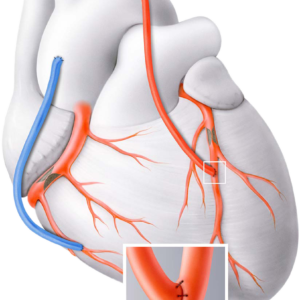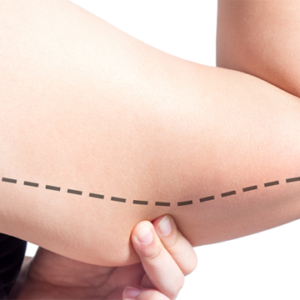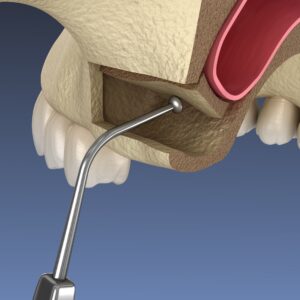

Free
Embark on a transformative journey with our exceptional range of medical treatments. As a leading medical tour operator, we offer a comprehensive selection of world-class treatments and procedures to address your unique healthcare needs. From advanced surgeries to cutting-edge therapies, our team of experienced professionals is dedicated to providing top-notch care and ensuring your comfort and satisfaction. Discover a new level of healthcare excellence with our tailored treatment options. Book now to start your journey towards a healthier and happier you.
Breast implant removal with a breast lift, also known as mastopexy, is a surgical procedure that involves the removal of breast implants and the reshaping of breast tissue to create a firmer and more elevated appearance. Here is a general overview of the procedure:
Consultation and Evaluation: Prior to the surgery, you will have a consultation with a qualified plastic surgeon. During this consultation, the surgeon will evaluate your breast anatomy, discuss your goals and expectations, and determine the most appropriate surgical plan for you.
Anesthesia: Breast implant removal with a breast lift is typically performed under general anesthesia. This means you will be asleep and pain-free during the procedure.
Incision Placement: The surgeon will make incisions based on the specific surgical plan and your individual needs. The incisions can be made around the areola (periareolar incision), in the crease under the breast (inframammary incision), or a combination of both. The choice of incision placement depends on factors such as the size and type of implants, the amount of excess skin, and the desired outcome.
Implant Removal: The surgeon will carefully remove the breast implants through the incisions. If there is any scar tissue (capsule) surrounding the implants, it may also be removed during the procedure.
Breast Tissue Reshaping: After the implants are removed, the surgeon will reshape the breast tissue to create a more lifted and youthful appearance. Excess skin may be removed, and the remaining breast tissue may be repositioned and tightened to achieve the desired shape and contour.
Nipple and Areola Repositioning: If necessary, the surgeon may reposition the nipple and areola to a more aesthetically pleasing location on the breast mound. This can help create a more balanced and natural appearance.
Closure and Dressings: The incisions are closed with sutures, and dressings or surgical tape may be applied to protect the incision sites and promote proper healing.
Recovery and Follow-Up: After the surgery, you will be given specific postoperative instructions to follow. This may include wearing a supportive bra, taking prescribed medications, and attending follow-up appointments to monitor your healing progress.
Breast implant removal with a breast lift is suitable for individuals who meet certain criteria or have specific goals. Here are some factors to consider:
Excess Skin and Sagging: If you have experienced significant stretching of the breast skin and tissue due to large breast implants, the removal of the implants alone may not be sufficient to achieve a satisfactory contour. In such cases, a breast lift can help tighten the tissues and skin, resulting in a more youthful and lifted appearance.
Nipple Position: The position of the nipples in relation to the breast tissue is another important consideration. If the nipples sit noticeably low on the breasts (below the inframammary breast folds) after implant removal, the breasts may appear saggy. A breast lift can reposition the nipples to a more aesthetically pleasing location on the breast mound.
Desired Aesthetic Outcome: Some individuals may choose to combine breast implant removal with a breast lift to achieve their desired aesthetic outcome. This may involve improving breast shape, contour, and symmetry, as well as addressing any concerns related to sagging or excess skin.
Excess Breast Tissue: In certain cases, individuals may have excess breast tissue that they wish to address along with the removal of breast implants. This can be achieved through a breast reduction procedure, which removes a greater quantity of breast tissue to reduce the size of the breasts.
Breast implant removal with a breast lift may not be suitable for everyone. Here are some factors to consider:
Minimal Sagging or Excess Skin: If you have minimal sagging or excess skin after the removal of breast implants, a breast lift may not be necessary. In some cases, the skin may retract naturally, resulting in a satisfactory breast contour without the need for additional surgery.
Desired Outcome: If you are satisfied with the appearance of your breasts after the removal of implants and do not desire a more lifted or firmer look, a breast lift may not be necessary. The decision to undergo a breast lift should be based on your individual goals and preferences.
Breast Tissue Quality: The quality and elasticity of your breast tissue play a role in determining the need for a breast lift. If your breast tissue is firm and maintains its shape well after implant removal, a breast lift may not be required. However, if your breast tissue is loose or sagging, a breast lift may be recommended to achieve a more aesthetically pleasing result.
Nipple Position: The position of your nipples in relation to the breast tissue is another consideration. If your nipples are already in an ideal position and do not sit noticeably low on the breasts, a breast lift may not be necessary.
Breast implant removal with a breast lift offers several advantages. Here are some benefits associated with this combined procedure:
Improved Breast Shape and Contour: Breast implant removal alone may result in sagging or loose skin. By combining the removal of implants with a breast lift, excess skin is removed, and the remaining breast tissue is reshaped and lifted. This can result in improved breast shape, contour, and symmetry.
Firmer and More Elevated Breasts: The breast lift component of the procedure helps to tighten and rejuvenate the stretched breast tissue. It can restore a more youthful and lifted appearance to the breasts, providing a firmer and more aesthetically pleasing result.
Addressing Nipple Position: If the nipples have become stretched or have descended lower on the breasts due to the presence of implants, a breast lift can reposition the nipples to a more desirable location. This can help create a more balanced and natural appearance.
Combining Procedures: Undergoing breast implant removal and a breast lift together can save time and potentially reduce overall recovery time compared to having the procedures separately. Combining the surgeries allows for a comprehensive approach to address both the removal of implants and the reshaping of breast tissue.
Personalized Results: The combined procedure allows for a customized approach to meet individual goals and preferences. The surgeon can tailor the surgery to achieve the desired breast shape, size, and symmetry, taking into account factors such as the amount of excess skin, the condition of the breast tissue, and the desired outcome.
Breast implant removal with a breast lift, like any surgical procedure, carries potential risks and complications. Here are some complications that may be associated with this combined procedure:
Bleeding: Excessive bleeding during or after surgery is a potential complication. Your surgeon will take steps to minimize the risk of bleeding, but it is important to be aware of this possibility.
Infection: Infection is a potential risk after any surgical procedure. Your surgeon will provide instructions on how to care for your incisions and minimize the risk of infection. If you notice signs of infection such as increased pain, redness, swelling, or discharge, it is important to contact your surgeon promptly.
Scarring: Breast implant removal with a breast lift involves incisions, which will result in scars. The extent and visibility of the scars will depend on factors such as the surgical technique used and individual healing characteristics. Your surgeon will make efforts to minimize scarring and provide guidance on scar management.
Changes in Sensation: Breast implant removal with a breast lift can potentially affect nipple and breast sensation. Some individuals may experience temporary or permanent changes in nipple sensitivity or breast sensation. Discuss this potential risk with your surgeon during the consultation.
Delayed Wound Healing: In some cases, the incisions may take longer to heal or may have difficulty healing properly. Factors such as smoking, certain medical conditions, or poor wound care can increase the risk of delayed wound healing.
Changes in Breast Appearance: While the goal of a breast lift is to improve breast shape and contour, individual healing and tissue characteristics can influence the final outcome. It is important to have realistic expectations and understand that there may be some changes in breast appearance after the procedure.
Complications from Anesthesia: Anesthesia carries its own set of risks, including allergic reactions, nausea, and other potential complications. Your anesthesiologist will discuss these risks with you before the surgery.
The preoperative care for breast implant removal with a breast lift typically involves several important steps. While the specific instructions may vary depending on individual factors and the recommendations of your plastic surgeon, here are some general aspects of preoperative care:
Consultation and Evaluation: You will have a consultation with a qualified plastic surgeon to discuss your goals, expectations, and medical history. The surgeon will evaluate your breast anatomy, skin elasticity, and overall health to determine if you are a suitable candidate for the procedure.
Medical Evaluation: Before the surgery, you may undergo a comprehensive medical evaluation to ensure that you are in good overall health and able to undergo the procedure safely. This may involve blood tests, imaging studies, and other diagnostic tests as deemed necessary by your surgeon.
Discussion of Expectations and Risks: Your surgeon will discuss the potential risks, benefits, and limitations of the procedure with you. It is important to have a clear understanding of what to expect and to address any concerns or questions you may have.
Preoperative Instructions: Your surgeon will provide you with specific preoperative instructions to follow. These may include guidelines regarding medications, smoking cessation, dietary restrictions, and the use of certain skincare products. It is important to follow these instructions closely to optimize your safety and surgical outcome.
Arranging for Support: Breast implant removal with a breast lift is typically performed on an outpatient basis. You will need to arrange for someone to drive you to and from the surgical facility and to stay with you for at least the first night following surgery.
Fasting and Medications: Your surgeon will provide instructions regarding fasting before the surgery. It is important to follow these instructions to minimize the risk of complications. You may also be advised to avoid certain medications or supplements that can increase the risk of bleeding or interfere with anesthesia.
Preoperative Testing: Depending on your medical history and the recommendations of your surgeon, you may undergo additional preoperative testing such as an electrocardiogram (ECG) or a chest X-ray.
The postoperative care following breast implant removal with a breast lift typically involves several important aspects. While the specific instructions may vary depending on individual factors and the recommendations of your plastic surgeon, here are some general considerations:
Dressings and Bandages: After the surgery, you may have dressings or bandages over the incision sites. These dressings help protect the incisions and promote proper healing. Your surgeon will provide instructions on when and how to change the dressings, if necessary.
Support Bra or Surgical Garment: You may be instructed to wear a support bra or a surgical garment following the surgery. These garments help provide support to the breasts, minimize swelling, and aid in the healing process. Your surgeon will advise you on the duration and type of garment to wear.
Drains: In some cases, drains may be placed during the surgery to remove excess fluid or blood from the surgical site. Your surgeon will provide instructions on how to care for the drains, including emptying and recording the output. They will also inform you when the drains can be safely removed.
Pain Management: You may experience some discomfort or pain after the surgery. Your surgeon will prescribe pain medication to help manage any postoperative pain. It is important to take the medication as directed and report any severe or persistent pain to your surgeon.
Activity Restrictions: Your surgeon will provide guidelines on activity restrictions and limitations during the recovery period. It is important to follow these instructions to allow for proper healing and minimize the risk of complications. Avoid strenuous activities, heavy lifting, and excessive arm or shoulder movements as advised.
Follow-up Appointments: You will have scheduled follow-up appointments with your surgeon to monitor your healing progress. These appointments allow your surgeon to assess the surgical site, remove any sutures or staples if necessary, and address any concerns or questions you may have.
Scar Care: Your surgeon will provide instructions on scar care to help minimize the appearance of scars. This may include the use of topical ointments, silicone sheets, or other scar management techniques. It is important to follow these instructions to optimize the healing of the incision sites.
Only logged in customers who have purchased this product may leave a review.






Breast implant removal with a breast lift, also known as mastopexy, is a surgical procedure that involves the removal of breast implants and the reshaping of breast tissue to create a firmer and more elevated appearance. Here is a general overview of the procedure:
Consultation and Evaluation: Prior to the surgery, you will have a consultation with a qualified plastic surgeon. During this consultation, the surgeon will evaluate your breast anatomy, discuss your goals and expectations, and determine the most appropriate surgical plan for you.
Anesthesia: Breast implant removal with a breast lift is typically performed under general anesthesia. This means you will be asleep and pain-free during the procedure.
Incision Placement: The surgeon will make incisions based on the specific surgical plan and your individual needs. The incisions can be made around the areola (periareolar incision), in the crease under the breast (inframammary incision), or a combination of both. The choice of incision placement depends on factors such as the size and type of implants, the amount of excess skin, and the desired outcome.
Implant Removal: The surgeon will carefully remove the breast implants through the incisions. If there is any scar tissue (capsule) surrounding the implants, it may also be removed during the procedure.
Breast Tissue Reshaping: After the implants are removed, the surgeon will reshape the breast tissue to create a more lifted and youthful appearance. Excess skin may be removed, and the remaining breast tissue may be repositioned and tightened to achieve the desired shape and contour.
Nipple and Areola Repositioning: If necessary, the surgeon may reposition the nipple and areola to a more aesthetically pleasing location on the breast mound. This can help create a more balanced and natural appearance.
Closure and Dressings: The incisions are closed with sutures, and dressings or surgical tape may be applied to protect the incision sites and promote proper healing.
Recovery and Follow-Up: After the surgery, you will be given specific postoperative instructions to follow. This may include wearing a supportive bra, taking prescribed medications, and attending follow-up appointments to monitor your healing progress.
Breast implant removal with a breast lift is suitable for individuals who meet certain criteria or have specific goals. Here are some factors to consider:
Excess Skin and Sagging: If you have experienced significant stretching of the breast skin and tissue due to large breast implants, the removal of the implants alone may not be sufficient to achieve a satisfactory contour. In such cases, a breast lift can help tighten the tissues and skin, resulting in a more youthful and lifted appearance.
Nipple Position: The position of the nipples in relation to the breast tissue is another important consideration. If the nipples sit noticeably low on the breasts (below the inframammary breast folds) after implant removal, the breasts may appear saggy. A breast lift can reposition the nipples to a more aesthetically pleasing location on the breast mound.
Desired Aesthetic Outcome: Some individuals may choose to combine breast implant removal with a breast lift to achieve their desired aesthetic outcome. This may involve improving breast shape, contour, and symmetry, as well as addressing any concerns related to sagging or excess skin.
Excess Breast Tissue: In certain cases, individuals may have excess breast tissue that they wish to address along with the removal of breast implants. This can be achieved through a breast reduction procedure, which removes a greater quantity of breast tissue to reduce the size of the breasts.
Breast implant removal with a breast lift may not be suitable for everyone. Here are some factors to consider:
Minimal Sagging or Excess Skin: If you have minimal sagging or excess skin after the removal of breast implants, a breast lift may not be necessary. In some cases, the skin may retract naturally, resulting in a satisfactory breast contour without the need for additional surgery.
Desired Outcome: If you are satisfied with the appearance of your breasts after the removal of implants and do not desire a more lifted or firmer look, a breast lift may not be necessary. The decision to undergo a breast lift should be based on your individual goals and preferences.
Breast Tissue Quality: The quality and elasticity of your breast tissue play a role in determining the need for a breast lift. If your breast tissue is firm and maintains its shape well after implant removal, a breast lift may not be required. However, if your breast tissue is loose or sagging, a breast lift may be recommended to achieve a more aesthetically pleasing result.
Nipple Position: The position of your nipples in relation to the breast tissue is another consideration. If your nipples are already in an ideal position and do not sit noticeably low on the breasts, a breast lift may not be necessary.
Breast implant removal with a breast lift offers several advantages. Here are some benefits associated with this combined procedure:
Improved Breast Shape and Contour: Breast implant removal alone may result in sagging or loose skin. By combining the removal of implants with a breast lift, excess skin is removed, and the remaining breast tissue is reshaped and lifted. This can result in improved breast shape, contour, and symmetry.
Firmer and More Elevated Breasts: The breast lift component of the procedure helps to tighten and rejuvenate the stretched breast tissue. It can restore a more youthful and lifted appearance to the breasts, providing a firmer and more aesthetically pleasing result.
Addressing Nipple Position: If the nipples have become stretched or have descended lower on the breasts due to the presence of implants, a breast lift can reposition the nipples to a more desirable location. This can help create a more balanced and natural appearance.
Combining Procedures: Undergoing breast implant removal and a breast lift together can save time and potentially reduce overall recovery time compared to having the procedures separately. Combining the surgeries allows for a comprehensive approach to address both the removal of implants and the reshaping of breast tissue.
Personalized Results: The combined procedure allows for a customized approach to meet individual goals and preferences. The surgeon can tailor the surgery to achieve the desired breast shape, size, and symmetry, taking into account factors such as the amount of excess skin, the condition of the breast tissue, and the desired outcome.
Breast implant removal with a breast lift, like any surgical procedure, carries potential risks and complications. Here are some complications that may be associated with this combined procedure:
Bleeding: Excessive bleeding during or after surgery is a potential complication. Your surgeon will take steps to minimize the risk of bleeding, but it is important to be aware of this possibility.
Infection: Infection is a potential risk after any surgical procedure. Your surgeon will provide instructions on how to care for your incisions and minimize the risk of infection. If you notice signs of infection such as increased pain, redness, swelling, or discharge, it is important to contact your surgeon promptly.
Scarring: Breast implant removal with a breast lift involves incisions, which will result in scars. The extent and visibility of the scars will depend on factors such as the surgical technique used and individual healing characteristics. Your surgeon will make efforts to minimize scarring and provide guidance on scar management.
Changes in Sensation: Breast implant removal with a breast lift can potentially affect nipple and breast sensation. Some individuals may experience temporary or permanent changes in nipple sensitivity or breast sensation. Discuss this potential risk with your surgeon during the consultation.
Delayed Wound Healing: In some cases, the incisions may take longer to heal or may have difficulty healing properly. Factors such as smoking, certain medical conditions, or poor wound care can increase the risk of delayed wound healing.
Changes in Breast Appearance: While the goal of a breast lift is to improve breast shape and contour, individual healing and tissue characteristics can influence the final outcome. It is important to have realistic expectations and understand that there may be some changes in breast appearance after the procedure.
Complications from Anesthesia: Anesthesia carries its own set of risks, including allergic reactions, nausea, and other potential complications. Your anesthesiologist will discuss these risks with you before the surgery.
The preoperative care for breast implant removal with a breast lift typically involves several important steps. While the specific instructions may vary depending on individual factors and the recommendations of your plastic surgeon, here are some general aspects of preoperative care:
Consultation and Evaluation: You will have a consultation with a qualified plastic surgeon to discuss your goals, expectations, and medical history. The surgeon will evaluate your breast anatomy, skin elasticity, and overall health to determine if you are a suitable candidate for the procedure.
Medical Evaluation: Before the surgery, you may undergo a comprehensive medical evaluation to ensure that you are in good overall health and able to undergo the procedure safely. This may involve blood tests, imaging studies, and other diagnostic tests as deemed necessary by your surgeon.
Discussion of Expectations and Risks: Your surgeon will discuss the potential risks, benefits, and limitations of the procedure with you. It is important to have a clear understanding of what to expect and to address any concerns or questions you may have.
Preoperative Instructions: Your surgeon will provide you with specific preoperative instructions to follow. These may include guidelines regarding medications, smoking cessation, dietary restrictions, and the use of certain skincare products. It is important to follow these instructions closely to optimize your safety and surgical outcome.
Arranging for Support: Breast implant removal with a breast lift is typically performed on an outpatient basis. You will need to arrange for someone to drive you to and from the surgical facility and to stay with you for at least the first night following surgery.
Fasting and Medications: Your surgeon will provide instructions regarding fasting before the surgery. It is important to follow these instructions to minimize the risk of complications. You may also be advised to avoid certain medications or supplements that can increase the risk of bleeding or interfere with anesthesia.
Preoperative Testing: Depending on your medical history and the recommendations of your surgeon, you may undergo additional preoperative testing such as an electrocardiogram (ECG) or a chest X-ray.
The postoperative care following breast implant removal with a breast lift typically involves several important aspects. While the specific instructions may vary depending on individual factors and the recommendations of your plastic surgeon, here are some general considerations:
Dressings and Bandages: After the surgery, you may have dressings or bandages over the incision sites. These dressings help protect the incisions and promote proper healing. Your surgeon will provide instructions on when and how to change the dressings, if necessary.
Support Bra or Surgical Garment: You may be instructed to wear a support bra or a surgical garment following the surgery. These garments help provide support to the breasts, minimize swelling, and aid in the healing process. Your surgeon will advise you on the duration and type of garment to wear.
Drains: In some cases, drains may be placed during the surgery to remove excess fluid or blood from the surgical site. Your surgeon will provide instructions on how to care for the drains, including emptying and recording the output. They will also inform you when the drains can be safely removed.
Pain Management: You may experience some discomfort or pain after the surgery. Your surgeon will prescribe pain medication to help manage any postoperative pain. It is important to take the medication as directed and report any severe or persistent pain to your surgeon.
Activity Restrictions: Your surgeon will provide guidelines on activity restrictions and limitations during the recovery period. It is important to follow these instructions to allow for proper healing and minimize the risk of complications. Avoid strenuous activities, heavy lifting, and excessive arm or shoulder movements as advised.
Follow-up Appointments: You will have scheduled follow-up appointments with your surgeon to monitor your healing progress. These appointments allow your surgeon to assess the surgical site, remove any sutures or staples if necessary, and address any concerns or questions you may have.
Scar Care: Your surgeon will provide instructions on scar care to help minimize the appearance of scars. This may include the use of topical ointments, silicone sheets, or other scar management techniques. It is important to follow these instructions to optimize the healing of the incision sites.
There are no reviews yet.
Only logged in customers who have purchased this product may leave a review.
Choosing the right hospital and physician are important factors to consider that significantly influence a patient’s treatment. The preferred choice for many patients is choosing private care.
Choosing the right hospital and physician are important factors to consider that significantly influence a patient’s treatment.
Reviews
There are no reviews yet.